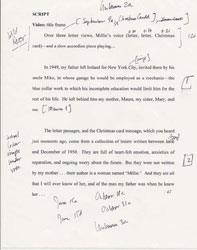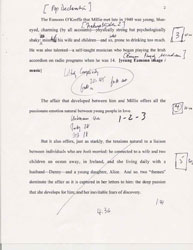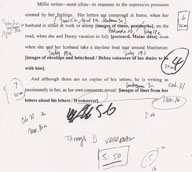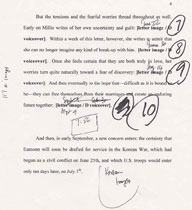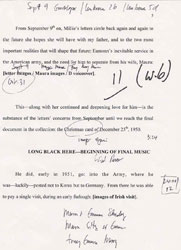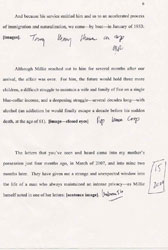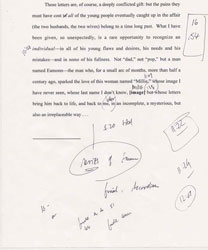The script that I would voice over throughout Mr. Secrets now exists in two versions: one copy embodies little more than the typed passages I would be reading, with basic notes about what letters will be presented visually, what parts of letters would be read aloud, and where supplementary images—old family photos—might be inserted; the other offers those same typed passage, but added to them is a constant stream of handwritten “production” notes.
Copy two became, for me, a wonderfully productive mess, and as I look back on it now it reminds me vividly of the unpredictable and recursive process of multimodal creation. There are specific notes on the nature and location of the music to be added; on the precise timing of both music and letter voicing; on the overall timing of the film; on the need to secure some images from outside my collection of photos; and on the addition of new letters not designed for in the first script. The location of these notes on individual pages, and some minor changes in my handwriting, also remind me that these notes were generated at several different moments in this script work on which the final product would most fully depend.
Looking back over these scripts also provokes the reverse feeling from what occurred when writing my commentary on the project’s first work: the annotated list of Millie’s letters. There, I was reminded that “purely textual effort” is an unlikely event in multimodal composing. Here, I am reminded that there really is (or can be, depending on the project) an enormous amount of actual textual work—done in the service of a document that will in the end be multimodal, but very vividly textual in its own and traditional right.
